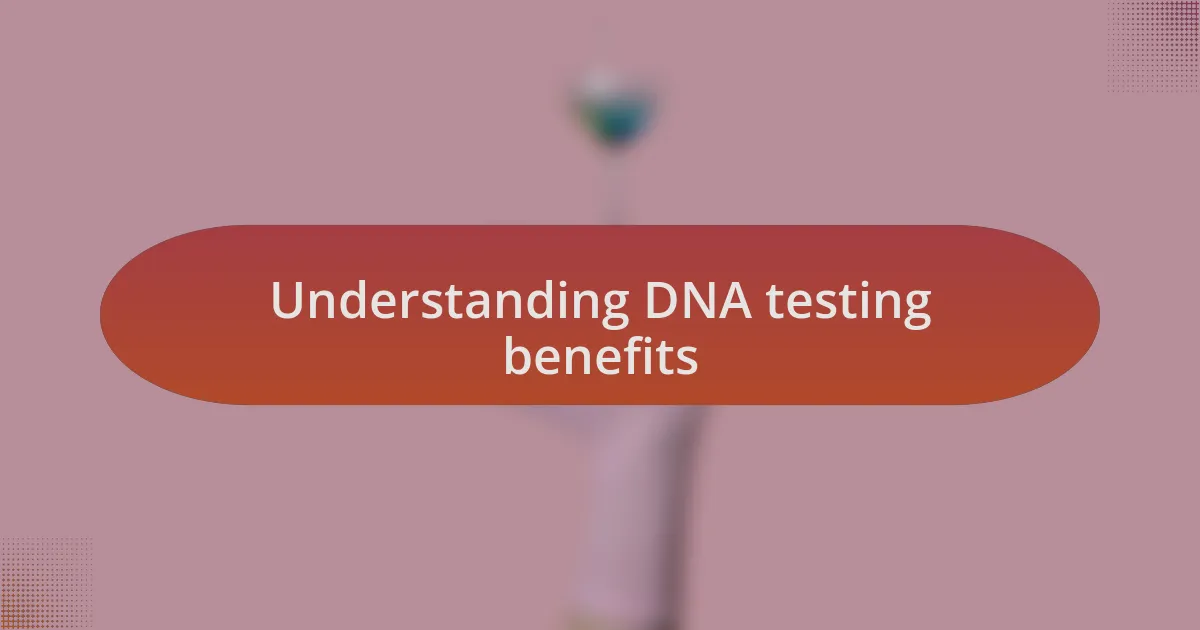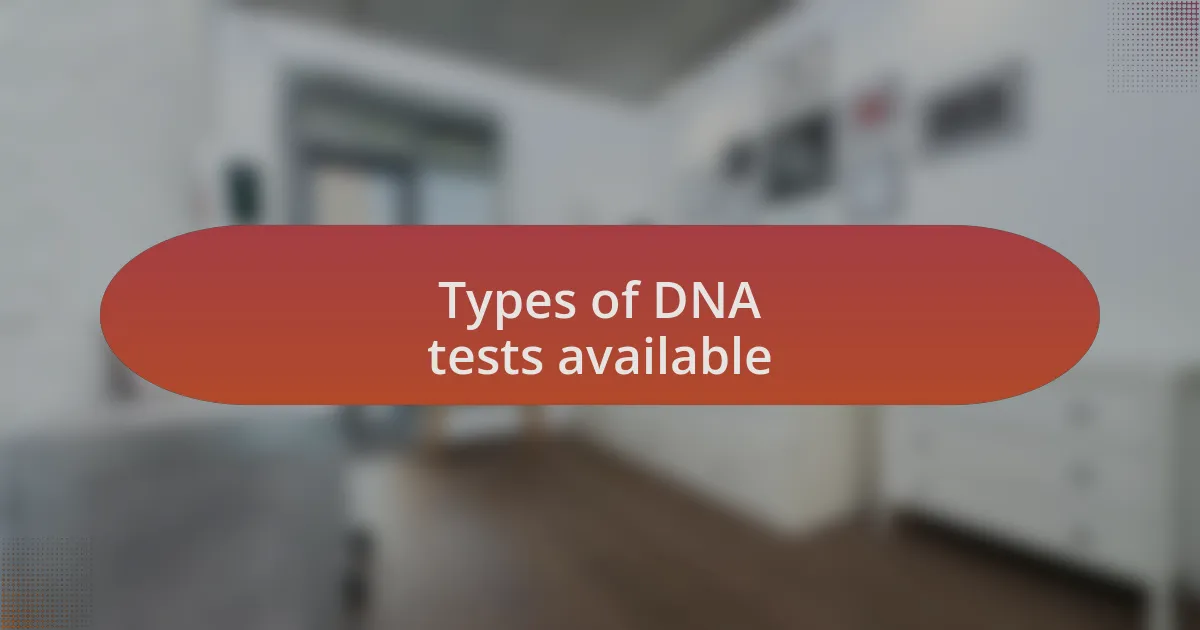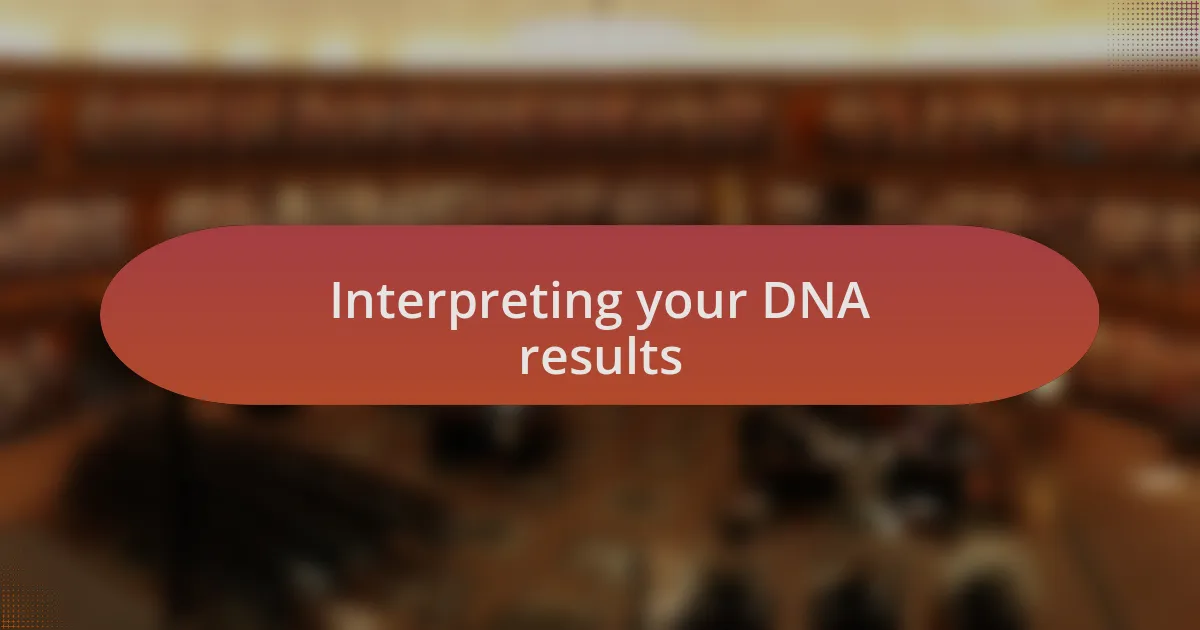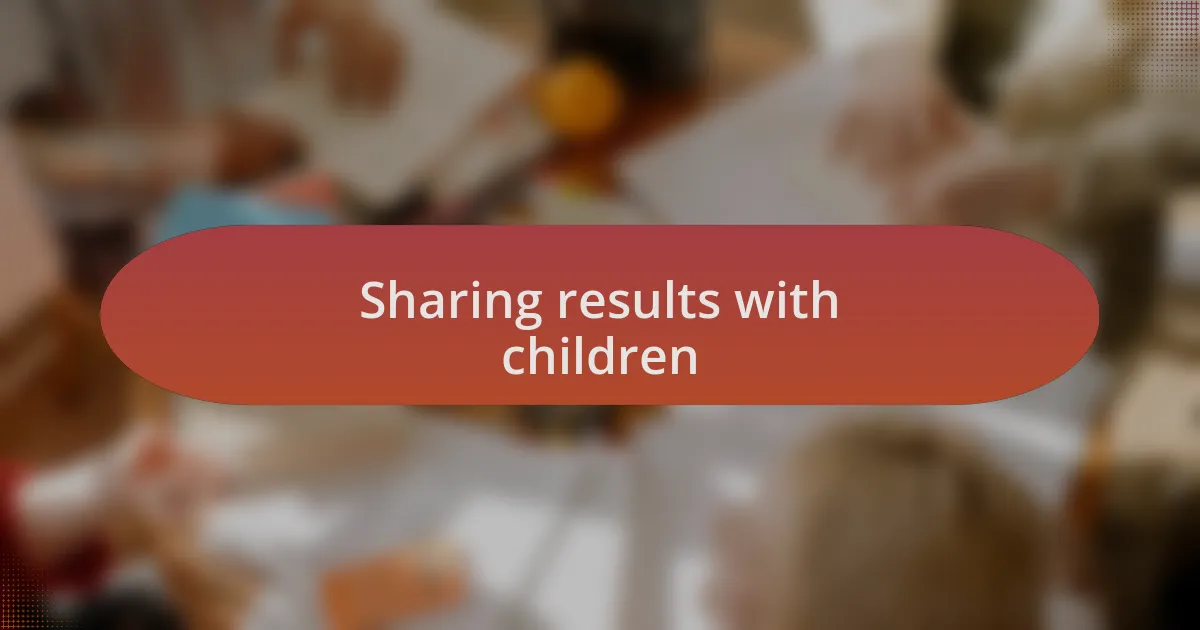Key takeaways:
- DNA testing can reveal health insights and enhance family connections, fostering curiosity and identity.
- Three types of DNA tests exist: autosomal, Y-DNA (for males), and mitochondrial (for both genders), each providing unique lineage insights.
- Preparation for testing includes discussing family goals, engaging in the experience, and managing expectations about results.
- Sharing results should be framed as a journey of exploration, connecting genetic information to family stories and traditions.

Understanding DNA testing benefits
Understanding the benefits of DNA testing can feel like peeling back layers of a fascinating story. For instance, when I first explored DNA testing for my children, I wasn’t just curious about their ancestry. I was motivated by the possibility of uncovering health insights that could guide their future. Could a simple test indicate risks for conditions in later life? It turns out, it can.
As I delved deeper, I found that DNA testing offers a bridge to lost connections. I remember feeling a profound sense of joy when my children discovered relatives they had never known. This experience opens up conversations about family history, sparking curiosity in my children that I cherish. Have you ever thought about how knowing your family tree can shape your identity? In my case, it built a stronger bond between us.
Moreover, the emotional safety net DNA testing provides shouldn’t be underestimated. Learning about genetic predispositions can arm us with knowledge. It’s empowering to understand what we may face so we can make informed lifestyle choices together. Isn’t it amazing how a small vial of saliva can lead to monumental discoveries for our family’s health and heritage?

Types of DNA tests available
When it comes to DNA testing, I discovered three main types: autosomal DNA, Y-DNA, and mitochondrial DNA tests. Autosomal testing, which I opted for with my children, analyzes genetic markers from both parents, giving a comprehensive view of our recent ancestry. It was fascinating to see the unexpected regions of the world our DNA revealed, sparking countless conversations about our heritage around the dinner table.
Y-DNA testing is a different ballgame. This type is exclusive to males and traces paternal lineage, making it a great choice for fathers curious about their ancestry. I remember discussing this with my husband, who was intrigued but also slightly intimidated by the possibility of uncovering surprising family stories on his side. What if there were hidden secrets in his lineage?
On the flip side, mitochondrial DNA tests focus on the maternal line and can be done by both genders. Knowing that I could follow my mother’s ancestry line was important to me. Each test adds layers to our family narrative, reflecting how diverse and rich our backgrounds truly are. Isn’t it eye-opening how these tests can reshape our understanding of family connections?

Preparing for the testing process
Preparing for DNA testing is more than just collecting samples; it involves thoughtful consideration of what you hope to learn. Before initiating the process, I spent time discussing our goals as a family. Were we seeking connections to distant cousins, or did we want to understand health implications? These conversations were enlightening and made me realize how important the motivations behind the tests are.
Gathering samples, often a simple saliva collection, can feel surprisingly intimate. I remember the excitement in my children’s eyes as we sat down with the kits. It was like a mini-science project at home! But I also had to prepare them for the possibility of unexpected findings. How would we handle results that might challenge their perceptions of who they are? It was essential for me to reassure them that our connections to each other and our heritage run deeper than just DNA.
Lastly, I found the timing crucial. It’s easy to think that once you’ve sent off the samples, the heavy lifting is done, but I discovered that staying engaged throughout the waiting period was key. I encouraged my kids to record their thoughts and questions. What parts of our family history were they most curious about? This not only built anticipation but also fostered a sense of ownership over this journey, intertwining our curiosity and excitement for the revelations to come.

Interpreting your DNA results
When the DNA results arrived, I felt a mix of excitement and trepidation. The reports often come with colorful charts and percentages, which can seem overwhelming. I remember staring at my children’s faces as they traced the lines on the family ancestry map, wondering what they meant. It became a learning moment for us, where I could explain how genes work and what those percentages really tell us about our heritage.
The results often reveal more than just family connections; they can also highlight unexpected aspects. For example, I was surprised to learn that my children share genetic traits with regions and cultures we had never discussed. This prompted an open conversation about identity. How do these results reshape our understanding of who we are? It’s a thought-provoking question that I found myself grappling with alongside my kids, allowing space for both excitement and confusion.
As I helped my children sift through the data, I emphasized that numbers and percentages are just part of the story. The real treasures lie in the narratives behind those results. I shared my own discoveries about long-lost relatives and historical connections, painting a fuller picture for them. After all, how do we celebrate and honor our heritage if we don’t understand the stories woven into our DNA?

Sharing results with children
When it came time to share the DNA results with my children, I noticed their eyes lighting up with curiosity. I chose to make it a fun reveal—like opening a surprise gift. I began by framing the experience as a treasure hunt, encouraging them to think about what each piece of information meant in relation to our family story.
One day, as we were sitting at the kitchen table, the conversation took a deeper turn. My youngest asked, “What if we find out we’re related to someone famous?” This playful question opened a rich dialogue about how our family history is intertwined with broader human stories. I realized that these results were not just numbers; they were portals into vibrant histories, shaping our sense of belonging.
While interpreting specific traits, I heard my eldest express a blend of pride and curiosity about our genetic makeup. I observed how the realization that we had Irish roots resonated with them, especially when we talked about visiting the country someday. It struck me that sharing these results was more than simply revealing data; it was about fostering a sense of identity and exploration that they could carry forward in their lives.

Lessons learned from my journey
Throughout my journey into DNA testing for my children, I discovered that understanding our heritage transcends just cold, hard numbers. When I first delved into the data, I was overwhelmed, but I soon realized that breaking it down to simple concepts made all the difference. This process taught me the value of patience—not just with the information itself but also with my children’s reactions and interpretations.
As I guided them through the findings, I learned that asking them open-ended questions sparked their imagination and deepened their engagement. For instance, when I mentioned our Italian ancestry, my daughter excitedly blurted out, “Can we learn how to make real pasta together?” This moment highlighted the importance of connecting genetic stories to tangible experiences and traditions, creating lasting memories beyond the test results.
Another crucial lesson was the significance of being sensitive to the emotional landscape of sharing such information. When my son expressed concern about our family’s health history, it was a poignant reminder to approach the topic with care. Embracing honesty while providing reassurance allowed us to have meaningful conversations about the future, equipping them not only with knowledge but also with a strong foundation for their own health awareness.